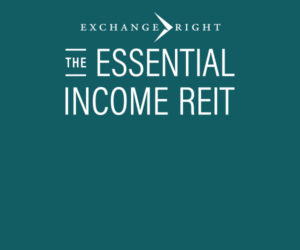John Kador | WealthManagement.com
Like clockwork, every Wednesday morning, Russ Thornton, an Atlanta-based advisor who specializes in helping women with retirement planning, publishes a financial newsletter called “Wealthcare for Women” on Substack.
Substack is an online platform that makes it easy for authors to efficiently publish and distribute digital newsletters at no cost (as Thornton does) or to actually get people to pay for content by charging a subscription fee (as most advisors who publish on Substack do). For finance-related newsletters, some content is provided at no cost, while subscribers pay $10-$30 per month for access to premium content.
Started in 2017, Substack has developed a huge audience. As of March 2024, it claims more than 20 million monthly active readers, with about 10% representing paying subscribers. Over 17,000 writers get paid on Substack, with top earners generating five- and six-figure annual payouts. A select few generate annual revenues in the millions.
Thornton, a self-described technology geek, has been online since the beginning of his career. He produced an early email newsletter, and then he transitioned to blogging. “I’ve seen the value in sharing thoughts online to make me more discoverable and to make it easier for prospects to understand how I’m thinking about financial matters,” Thornton says.
Substack appealed to Thornton because he wanted to simplify his online writing practice. “What I see Substack doing is giving me the benefit of a blog and newsletter in one. It provides a community of writers and readers around me, which adds to my discoverability,” he notes. “Much of what we do happens when money is in motion (e.g., divorce, death, retirement). I believe publishing on Substack increases the likelihood that it will be on top of mind when a reader has a money-in-motion event.”
Thornton has decided not to charge for the content he is providing. He is happy to build additional touchpoints with clients and prospects as he develops a growing digital community as a thought leader on retirement issues for women. Giving away content also has an additional benefit: it reduces compliance concerns.
Monetizing Content
Morgan Ranstrom, co-founder and financial planner at Minneapolis-based Trailhead Planners, is grateful that enough Substack readers subscribe to his “Retire on Purpose” newsletter to generate annual revenues in the low five figures.
“Substack was an easy way to go from zero to 60 on a consolidated site and monetize my writing,” Ranstrom says. Publishing on Substack saved Ranstrom the drudgery of setting up his own blog or email service. The platform is conducive to the longer, more analytical essays he prefers to write, for which platforms such as Twitter (now X) and Instagram are unsuitable.
Substack is a prime example of the power of the network effect, whereby every new user makes the platform more valuable to every other user. “Substack allowed me to expand my network; I met a lot of great people; plus it was an easy way to increase my client bases as well as monetize my writing,” Ranstrom says. He strives to post two or three times a month.
Newsletters on Steroids
The internet has rendered traditional newsletters obsolete. As recently as 1980, there were over 600 investment newsletters delivered by mail with subscriptions up to $500 per year (about $1,500 adjusted for inflation). These newsletters promised investors tools and insights for getting an edge on the markets. Only a handful, like “The Bowser Report,” a digital publication that recommends low-priced stocks, maintain paying subscribers.
Eventually, all of the publications transitioned to email. Now, Substack is replacing traditional investment-related email newsletters. The publishing trend is away from newsletters delivered to opt-in mailing lists maintained by advisors. Substack’s tools make publication easy and relieve advisors from the complexities of managing mailing lists. The platform’s analytics provide granular details on what percentage of posts are opened and which posts persuade readers to read for free or upgrade to a paid subscription.
Substack uses the “freemium/premium” business model, in which basic features of a product or service are offered to users at no cost, while supplemental or advanced features are provided for a fee. Paid subscribers typically get exclusive content and the ability to leave comments and become part of communities of like-minded subscribers. Because all participants are paying members, Substack comments sections are free of the spam and trolling that befouls many online platforms.
While the range of topics and approaches on Substack are vast, the most successful Substacks (as measured by subscribers and revenue) have a few elements in common. Consistency of publication may be the most critical, says Thornton, who settled on publishing every Wednesday morning.
“Whatever cadence you choose, being consistent is critical. I like to think I’m becoming a little fixture in my reader’s Wednesday mornings,” he says.
Advisor Do’s and Don’ts
Advisors dispensing financial information have special requirements when they publish on Substack (or anywhere else). Every post should have a disclosure link that takes readers to the advisor’s approved disclosure page. Compliance also should review every post before it is published. Here are some more do’s and don’ts reported by advisors publishing on Substack.
Do
•Be consistent in publishing;
•Write like you talk;
•Keep it short (500-800 words);
•Make it easy to share content (social media sharing);
•Include a call to action (subscribe, ask questions, link to calendar);
•Ensure all disclosure links are present;
•Have a system to capture ideas for future posts.
Don’t
•Delay. Just go for it;
•Overthink it;
•Try to impress;
•Work to please everyone;
•Publish before compliance reviews.
The most successful Substack newsletter, “Letters from an American” by Professor Heather Cox Richardson, about the history behind today’s politics, is published daily. With hundreds of thousands of paying subscribers, the newsletter has implied annual earnings of $5 million. Most of the top 20 popular Substacks are published daily.
Passion is also key. The best Substacks are written by authors who are passionate about their topics, have a definite point of view and stick to the subject at hand. Many of the most popular Substacks indulge in “shop talk.” Readers love to peek behind the curtain. If you can reveal the mechanics of your world to readers, a significant number will pay $5 per month for the privilege. A sure loser of an approach is to write a Substack that tries to please everyone.
Five Recommended Advisor Newsletters on Substack
Of the thousands of newsletters published on Substack, dozens deal with various aspects of finance, investing, trading and economics. To sample what Substack has to offer, advisors can’t go wrong with these five newsletters.
Wealthcare for Women
Author: Russ Thornton
Frequency: Weekly
Cost: Free
Description: Focused on helping women get ready for and transition smoothly into retirement, care for their families, protect their wealth and live great lives.
Example: Do I Need to Rebalance My Portfolio?
Brinker Advisor
Author: Bob Brinker
Frequency: Weekly
Cost: Free or $25 per month/$300 per year
Description: Quantitative and technical analyses of emerging market trends, monetary policy and related topics.
Example: FOMC Meeting and Leading Economic Indicators
Noah Opinion
Author: Noah Smith
Frequency: 5 times per week (3 free; 2 for subscribers)
Cost: Free or $10 per month/$100 per year
Description: Finance, technology, geopolitics and culture from an economics angle.
Example: Market-Rate Housing Will Make Your City Cheaper
The Advisor
Author: Reese Harper
Frequency: Weekly
Cost: Free or $15 per month/$99 per year
Description: Financial advice, financial literacy, client management, trust, parenting.
Example: Stop Comparing, Start Living: The Real Wealth is Being Alive
The Overshoot
Author: Matthew C. Klein
Frequency: Weekly
Cost: $30 per month/$330 per year
Description: Data-driven market analysis into global trade and financial flows, macroeconomic balance sheets and demographics plus data visualizations.
Example: Why Have Rates Not Done Anything?











